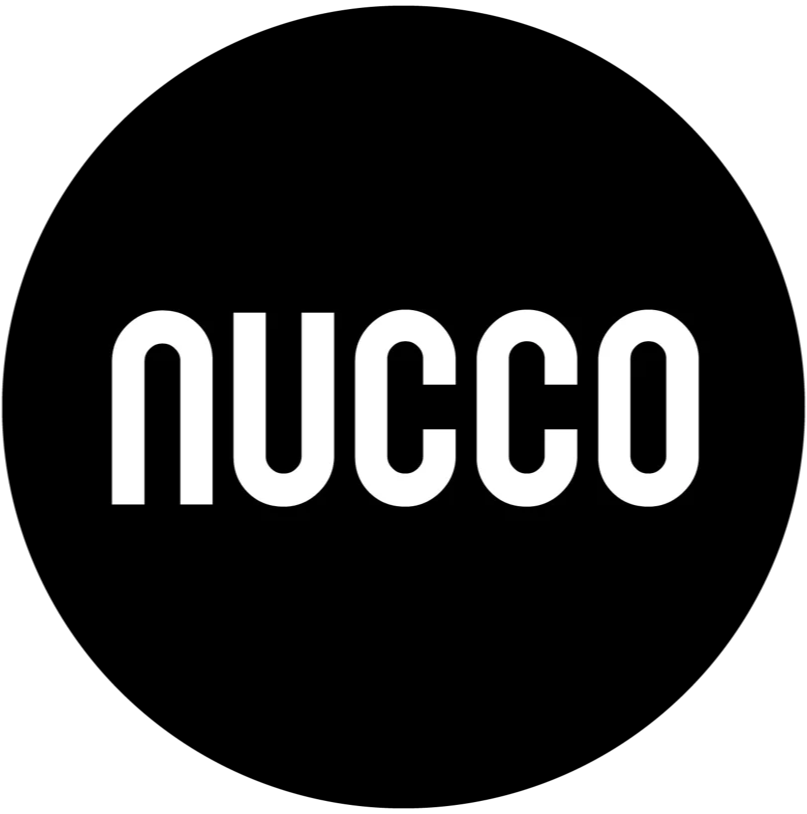THE RECIPE FOR AN EFFECTIVE BRANDED EXPLAINER VIDEO

How to make complex information, simple.
A key part of what we do here at Nucco is creating explainer videos, and we’ve gotten pretty good at it over the years. Thanks to a potent blend of experience and expertise, we’ve perfected our formula for distilling dry or complex information into fun and engaging videos, animated or otherwise. If you want to grab the attention of your audience, informing them without overwhelming them with information, look no further than Nucco’s recipe for effective explainer videos.
Before we continue, it’s important to define explainer videos and find out why they’re such a vital part of your content strategy.
What is an explainer video?
An explainer video is a promotional piece of content with a twofold purpose: to generate brand awareness, and to explain a complex proposition or service simply. An element of complexity in the information you want to convey is an essential ingredient: most of the explainer content we produce primarily involves untangling and explaining complicated concepts in an easily digestible way. One great example of an effective explainer video is the video we created for ESA with the goal to expand their international partnerships with other businesses in the space technology industry.
Why is an explainer video useful?
Explainer videos are primarily distributed digitally, and can be appended to an official website, posted on social media or shared via third-party channels. One of paid online media’s great advantages is the fact that you can use detailed parameters to select the audience that will see your video. Therefore, a video about mortgages can be shown to homeowners aged 35+, and one about graduate school options can be shown to students aged 22 to 35.
Blasting your video around the internet is not enough, however. With an average attention span of around 5 to 8 seconds, your viewers need to be drawn into the world that you create. They need a hook to pique their interest and keep them from straying too soon. They need to be able to quickly process your colour scheme and associate it with your brand. And they need to absorb information as they follow a narrative that keeps them engaged. Using this strategic thought process, we developed an explainer video for John Lewis which clarified their new partnership pension scheme.
A good explainer video will leave your audience interested in your proposition, impressed by your technical know-how, knowledgeable about your product or service, and engrossed in your brand story.
What to do:
1. Ask stupid questions
In many other industries, asking the painfully obvious is stigmatised. Not so here: chances are, your clients are so emotionally and intellectually invested in their business that they will be happy to talk about it at great length and clarify every single aspect of what they do. While this information may be very clear to your clients, it’s nowhere near as clear to their customers. This means that instead of being as clever as you can, you have to take the layman’s perspective.
Assume that your audience knows nothing about the industry, nothing about your brand, and nothing about your product. Ask the banal and idiotic questions: the potential humiliation of sounding uninformed in front of your clients isn’t even remotely comparable to that of creating a video that nobody watches or cares about. It’s an explainer video, not a university lecture.
2. Develop a clear and appealing style
This is paramount, and applies to both your chosen tone of voice and visual aesthetic. When developing your style, you have two main considerations:
First, make sure you do not forget the importance of the brand in informing your colour palette, geometric design and communications approach, similar to how we used the Iagon brand colours throughout their entire explainer video communicating their computing system, a branded way to communicate a complicated idea, simply. Wherever possible, avoid emulating what your competitors have created. For your brand to truly shine, it must carve out its own identity in the marketplace and become instantly recognisable as such.
Second, embrace simplicity. Your video exists to explain complicated concepts simply; therefore, adopt a clear and well-defined style. The right visuals will enhance and demonstrate without detracting from your core messaging. The wrong visuals (dry, unimaginative or unconnected with the brand) will simply confuse and irritate people.
3. Be visual
It might sound self-explanatory and really rather simple, but humans are visual beings: speak their language. Ask yourself how you can show without telling. Simplify your script, and determine which information can be communicated through shape, colour and movement rather than words.
Many of the briefing documents we receive from our clients are highly detailed and verbose, and a large part of our job involves expressing these in the appropriate visual language. We ask ourselves what we can suggest without explicitly spelling it out. Once again, we have to engage our audience in dialogue by introducing an element of passive absorption, which is primarily visual in nature.
4. Be pedantically aware of short attention spans
Consider the context in which your video is being viewed: digital audiences are losing their ability to concentrate on one stimulus for extended periods of time. An attention span of 60 to 90 seconds is all you can really ask of your viewer. This doesn’t necessarily mean that you have to condense everything you want to say into one minute, but you do have to consider breaking down your message into shorter and more digestible chunks of content if it’s too long. If one video isn’t enough, make a series – it will cost you the same, but the return will be much greater.
If you’re creating a video for B2B or internal enterprise communications, you have more control over the context in which it’s shown, meaning that you can stretch the length a little if you desire. However, it’s inadvisable even then to do so by too much, as you risk eroding the goodwill of your audience.
5. Invite the viewer to find out more
One cardinal limitation of the explainer video is that it can never be fully exhaustive. You can never cover everything there is to know about a product or service in a 60 to 90 second video, due to time constraints, budget and the nature of the format. But don’t despair: that’s not the job of an explainer.
Its job is, funnily enough, to explain the key function, proposition and features of whatever it is you have to offer. Leave out the minutiae and the irrelevant technical specs. Give your audience an incentive to find out the rest for themselves: after all, no matter how impressive your technology or original your idea, if people can’t apply it to their lives, you might as well be peddling leashes for goldfish.
Explainer videos are collaborative experiences: you create the content, and the viewer absorbs and engages with it. Cultivate this relationship and continue the dialogue by generating a Call-To-Action that exhorts them to take further action.
What not to do:
Now that we’ve identified the main ingredients for a perfect explainer video, remember that your project can also burn down the kitchen if you don’t consider these caveats. You’re welcome.
1. Don’t cram all the information into one video
Your product or service may have several million incredibly useful and mind-meltingly technical functions, but attempting to list them all in detail would be a grave mistake. Focus on the overview: what are the key features of your offering, and why should your customers care? And if you absolutely have to tell them more, consider turning your explainer into a series.
2. Don’t assume your specs are enough to keep people interested
The number of mega-giga-maxi-pixels on your super-smartphone camera is certainly a very important touch-point, and can add a lot to your value proposition. However, these details aren’t enough on their own to carry your product through. Focus on the benefits, which you can then back up with specs. Tell your customer that a certain number of mega-giga-maxi-pixels is more than what their current phone has, and will improve their life by allowing them to take extraordinary pictures of the people and places that matter.
3. Don’t use too much jargon
Just because you have a client that specialises in highly technical wording, like an engineering or Blockchain company, does not mean you can assume that customers will understand all the jargon you throw at them. If you want to talk about an industry that might seem inaccessible for some, make it accessible: skip the jargon and use language that caters to the lowest common denominator.
That’s not to say you have to dumb it down completely: after all, you want to make it clear that you have the technical know-how and expertise to back up your claims. Make sure that you use your technobabble wisely and in support of your message, rather than as the message itself.
4. Don’t follow an A-B-C structure
This is an explainer video, not a textbook. Information shouldn’t necessarily be given in logical, chronological or alphabetical order. If you want to generate curiosity and engage your viewer within that critical 5 to 8 second window, the exciting material needs to come first. Create a reason for your customers to be interested in your offering that goes beyond ‘first we do this, and then we do that.’ There are very few people, ourselves included, who can really engage with a dry list of ordered key points without any real hook or angle.
5. Don’t flub up your pacing
In any film, novel or TV series, pacing is everything. If the action moves forward too slowly, the viewer loses interest and seeks out more dynamic fare. If it moves too quickly, the viewer has no time to breathe, get to know the characters, or find a reason to care about what’s happening. The human brain is hard-wired to absorb narratives at Goldilocks speed (just right!)
Because your explainer video won’t quite generate the same amount of mental engagement as the latest episode of Game of Thrones, you’re going to have to find a way to spark their attention. Articulate your complex exposition with something simple and entertaining that doesn’t get bogged down in the details.
Creative insights
We practice what we preach when it comes to explainer content. For example, we were recently approached by Deloitte, who wanted their customers to know about complex economic changes currently being introduced into the Gulf region. A video about VAT implementation in GCC countries could have made for very uninspiring viewing; however, we found an angle and a visual style that both simplified and added an emotional dimension to the subject matter.
We decided to implement the following narrative: there’s a complex change occurring in your region that has never previously been of concern to you. But Deloitte has been working with tax for many decades. We’re well-placed to let you know what’s happening, what you need to be aware of, and how we can help you.
It’s a simple message, but it speaks directly to the viewer, informing them, alleviating their concerns, and building trust in the brand.
Ultimately, the secret to the perfect explainer video lies in gathering a great deal of information about the offering that you aren’t necessarily going to use. This ensures that you know exactly what the most important talking points are. You can then get to work wording and ordering them in a way that flows naturally and keeps your audience engaged.
If you have trouble simplifying your complex content, drop us a line – we’d love to help.


